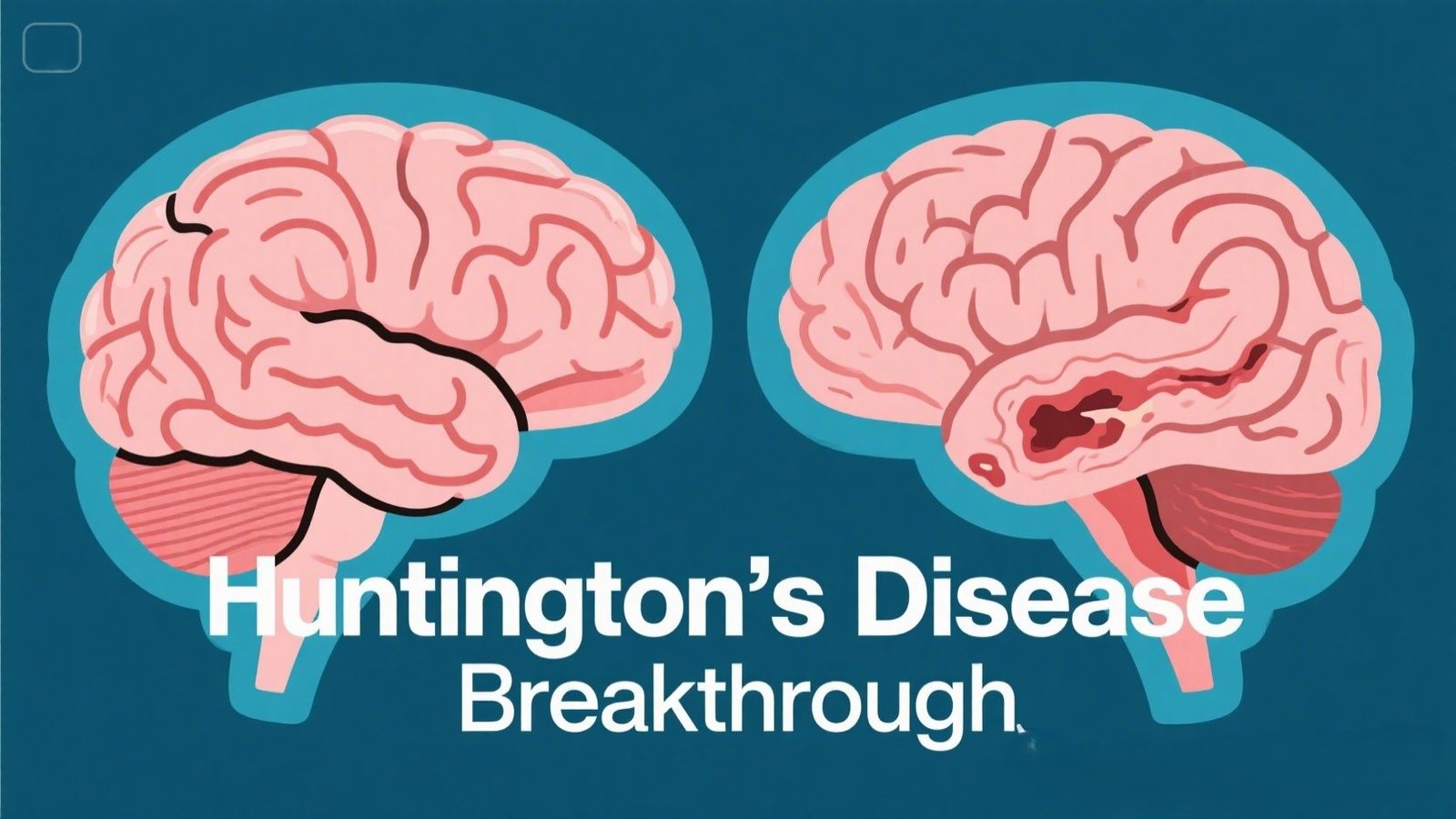
A Historic Announcement
On September 24, 2025, researchers from uniQure and University College London (UCL) announced results that may change the course of Huntington’s disease forever. Their experimental gene therapy, called AMT-130, slowed the disease’s progression by about 75% over three years in patients who received the highest dose.
For decades, Huntington’s was viewed as unstoppable — a genetic fate with no cure. This study is the first time in history that a therapy has shown meaningful slowing of the disease, not just treatment of symptoms. Families touched by Huntington’s now have a reason to believe that hope is real.
What Is Huntington’s Disease?
Huntington’s disease (HD) is a rare, inherited brain disorder. It causes the progressive breakdown of nerve cells in areas that control movement, cognition, and emotion.
- Genetics: It is caused by a mutation in the HTT gene, where a DNA sequence (CAG) repeats too many times.
- Inheritance: Autosomal dominant — if one parent has the mutation, each child has a 50% chance of inheriting it.
- Onset: Symptoms usually appear between ages 30–50, though juvenile cases exist.
A Brief History
- 1872: American doctor George Huntington first described the disease, calling it “hereditary chorea.”
- 1993: Scientists identified the HTT gene mutation as the root cause.
- Since then, research has revealed that the mutation produces a toxic protein that accumulates in brain cells, leading to their death.
For over a century, Huntington’s was considered a “family curse” — passed down with no treatment and no way out.
Symptoms and Effects
Huntington’s progresses in stages:
- Early stage: Mood changes, depression, irritability, trouble with concentration, slight involuntary movements.
- Middle stage: Worsening jerky movements (chorea), clumsiness, difficulty swallowing and speaking, memory loss.
- Late stage: Full loss of motor control, inability to speak or care for oneself, high risk of pneumonia or infections.
Life Expectancy
- After symptoms begin, most patients live 10 to 30 years.
- In juvenile Huntington’s, decline is much faster — often 10 to 15 years.
- Death usually results from complications such as infections, falls, or difficulty swallowing.
Until now, there was no treatment that could alter this course — only medications to ease symptoms.
The Breakthrough: AMT-130 Gene Therapy
How It Works
- Uses a harmless AAV5 viral vector to deliver gene-silencing instructions directly into the brain.
- Surgery: A 12–20 hour neurosurgical procedure infuses the therapy into regions most affected by Huntington’s.
- Goal: Reduce production of the toxic huntingtin protein and protect neurons.
Results From the Trial
- Progression slowed by ~75% in high-dose patients over 36 months, compared to natural progression.
- Daily functioning decline slowed by ~60%, helping patients retain independence longer.
- Biomarkers improved: Levels of neurofilament light (a marker of nerve cell injury) decreased instead of rising.
- Safety: Most side effects were from surgery itself, not the therapy. No new unexpected safety issues reported.
Why It Matters
This is the first therapy ever to show strong evidence of slowing Huntington’s disease in humans. It proves that the disease can be modified at its root cause, not just managed at the surface.
What’s Next
- uniQure plans to file for U.S. FDA approval in 2026.
- Larger trials are needed to confirm long-term safety and durability.
- Challenges remain: high surgical complexity, cost, and making treatment accessible worldwide.
A Moment of Hope
For decades, Huntington’s disease meant despair and inevitability. This breakthrough changes the story. Patients and families can now see that the disease’s course is not fixed — it can be slowed, and one day perhaps even cured.
From a faith perspective, this is more than science. It is an answer to prayers, a reminder that God works through human hands and minds to bring healing.
“With man this is impossible, but with God all things are possible.” — Matthew 19:26
The fight is not over, but for the first time, the tide has turned.



